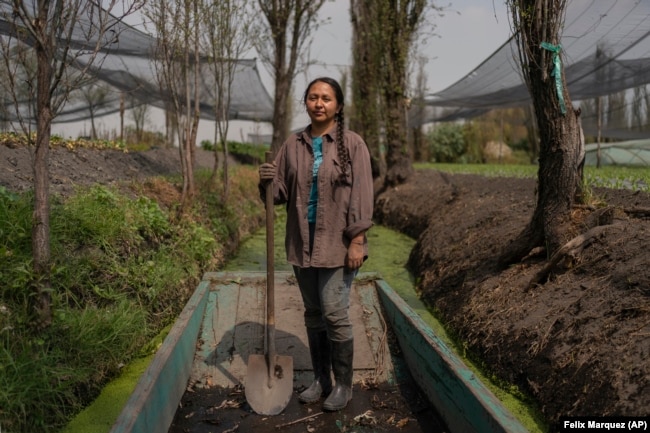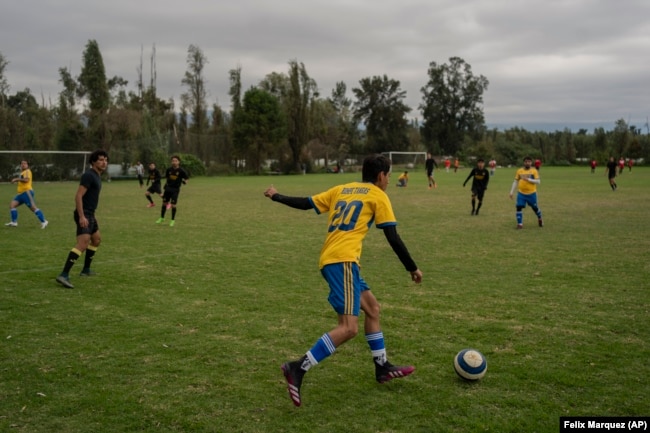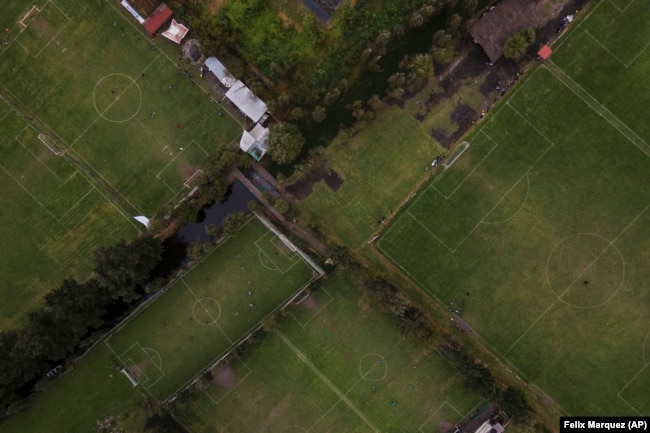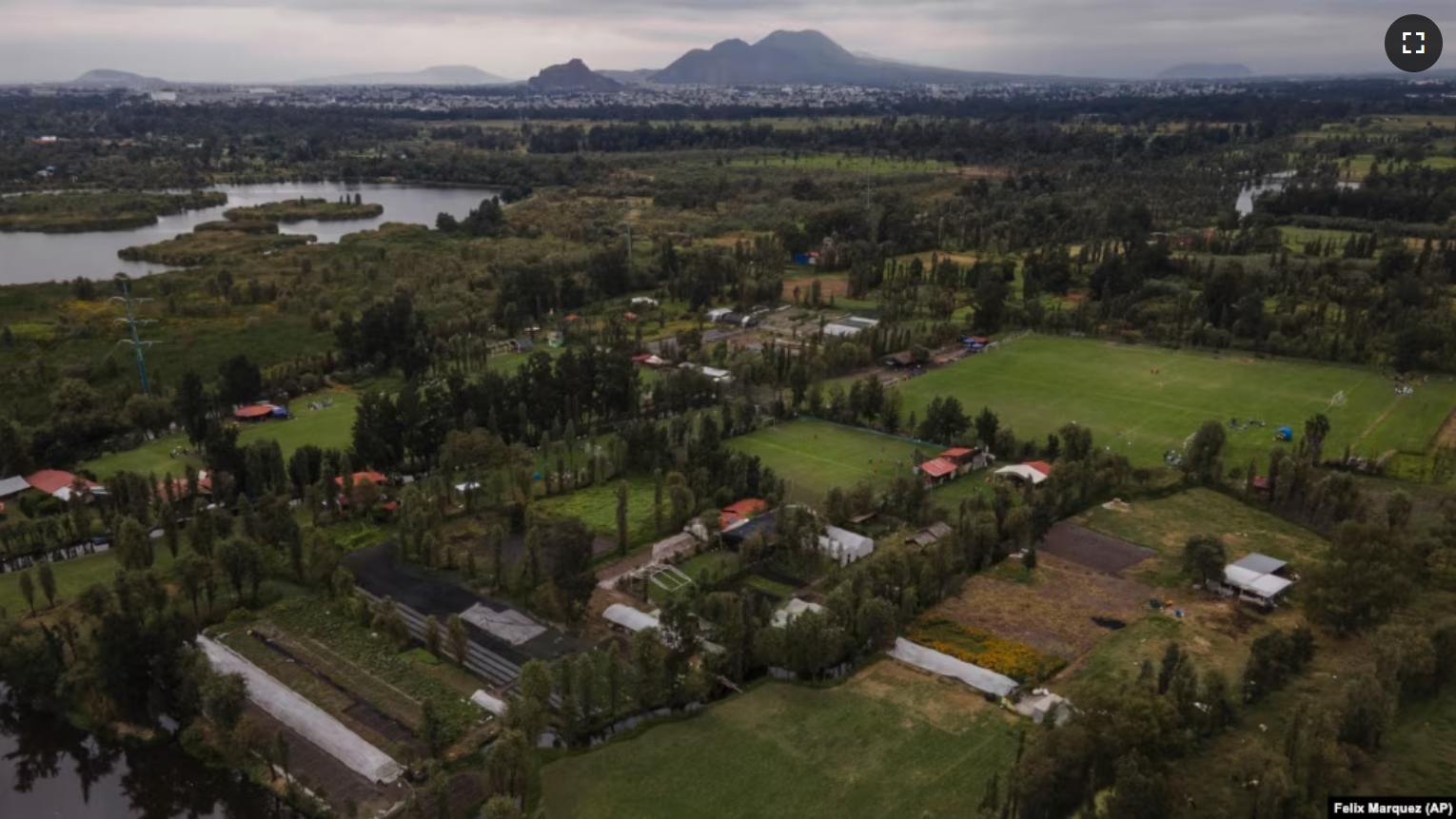Several large lakes once surrounded Mexico City. Those lakes have disappeared over the years. But what is left of one of them is still important to local people who grow food.
Cassandra Garduño works in her family’s chinampa. In Mexico, a chinampa is an island that was built up by the native Aztec people with fertile mud from the bottom of lakes that surrounded their capital.
One of the areas is called Xochimilco. The islands there are held together by a kind of willow tree planted around their edges. Narrow waterways connect them.

Xochimilco has more than 1000 hectares of protected land owned by generations of local Chinamperos, as those who farm on the islands are known. Food grown on these islands has fed people for hundreds of years, but the chinampas are under threat from modern ways of life.
Growing food on the chinampas does not make much money. Many families are giving up the old ways to rent out or sell their land. They have found it easier and more profitable to use the land for soccer fields and tourism.
“People don’t want to farm anymore, and people don’t want to buy the products.” said Garduño.
Some of those who stay, like Garduño, are working together to save and support the traditional use of the chinampas.
Garduño remembers seeing her grandparents’ chinampas as a child. Even then, she saw how the chinampas were suffering under pressure from modern life. Some farmers had already given up.

Garduño bought land for her own chinampa in 2020. She grows several crops, including sunflowers, eggplant, and the Mexican marigold. She is a member of the growing collective called Chinampa Refuge. The National Autonomous University of Mexico started the collective.
With other farmers in the group, she has asked other Chinamperos to preserve their land. They follow old ways of growing. But they also are trying new commercial methods to compete with low-cost goods grown on big farms in Mexico.
Their products include a special tag — Etiqueta Chinampera — that tells buyers the produce came from a chinampa. The tag also might bring attention to the area’s water quality or the chinampa’s status as a biodiversity refuge.
“Change comes with educating the new generations,” said Garduño. “Talking about the origins and efforts to conserve and why it’s important to do it.”
Luis Zambrano is a scientist at the National Autonomous University of Mexico who has worked in Xochimilco for many years. He said the fields can mostly support themselves. Fed and watered by the lake, they can produce three to five crops of vegetables a year without the need of chemicals or irrigation, he said.

Xochimilco’s natural resources help the city in several ways. Many kinds of birds and fish live there. The system of waterways helps reduce the city’s overall temperature, Zambrano said.
But now, on weekends, it is common to see more soccer players boating to islands than farmers tending their crops. Over the past two or three years, Zambrano said, there has been a “massive increase” in the number of soccer fields on the islands. There are also food stands and boat trips for visitors.
“If you do well (farming) you could earn $5,000 to $10,000 a year,” Garduño said. “In the tourist area you could have that within a couple of weekends.”
Zambrano said the soccer fields damage the environment “because the amount of chemicals that are used, the amount of pollution that is generated is very, very large.”
Carlos Vasquez, director of the Natural Protected Areas under Mexico City’s Environmental Department, said his group is working on ways to limit the damage by the soccer fields.

Sixty-three-year-old Juan Ávalos and his brother Salvador Gonzalez Ávalos, who is 55, have been working on chinampas all their lives. Salvador said they want to pass their farming methods on to their grandchildren.
“That’s something we need to work on as grandparents,” he said. “That they integrate themselves with a taste for this earth.”
I’m Jill Robbins.
Mariana Martínez Barba and Julián Trejo Bax reported this story for the Associated Press. Jill Robbins adapted it for Learning English.
______________________________________________
Words in This Story
rent out –v. (phrasal) to offer property for others to use in exchange for regular payments
tourism –n. the industry of providing goods and services for visitors from another place
commercial –adj. related to business or activities aimed at making a profit
tag –n. a small sign that has information about the product that it is attached to on it
